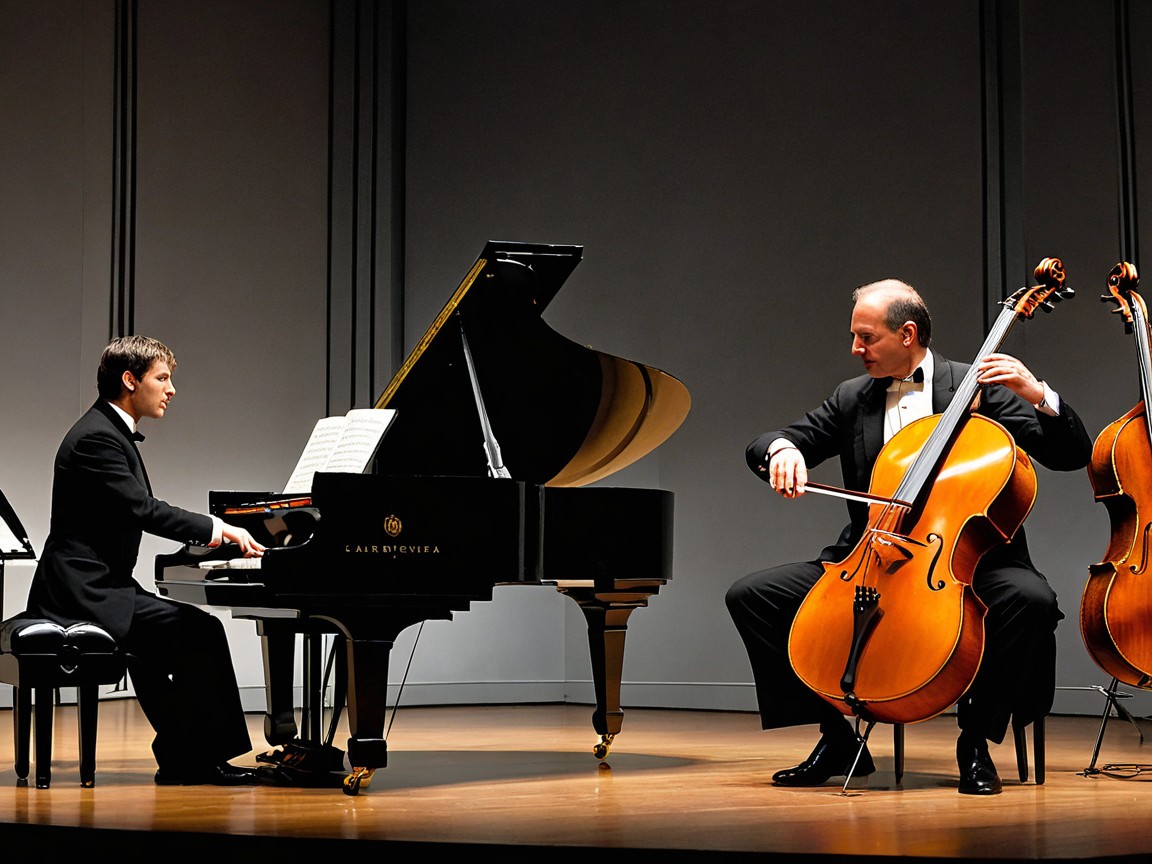Classical to Modern Music has been a universal language, connecting cultures, emotions, and generations. Over centuries, music has evolved from the structured and refined harmonies of classical compositions to the varied and dynamic beats of contemporary genres. This evolution, driven by cultural shifts, technological advancements, and artistic ingenuity, tells a desirable story of transformation. During this journal, we will take into the journey of classical to trendy music, exploring its origins, milestones, and the impact of this transformation on society.
What is Classical Music?
Classical music refers to a genre still in the traditions of civilization and preponderantly developed between the seventeenth and early nineteenth centuries. Characterized by its quality, symmetry, and emotional depth, musical style has made several of history’s greatest composers, as well as Mozart, Beethoven, and Bach.
The hallmark of musical style lies in its structure. Symphonies, operas, and concertos follow precise forms, like sonata-allegro or severe music. These compositions were crafted with meticulous attention to harmony and melody, showcasing a dateless sophistication.
Classical music additionally served as a mirror image of the cultural and social values of its era. For example, throughout the Baroque period, music symbolized grandeur and spirituality, whereas the Romantic period embraced passion and individualism. Despite its age, musical style remains a cornerstone of musical education and inspires modern composers.
The Emergence of Contemporary Music
The journey from classical to modern musicbegan in the late nineteenth and early twentieth centuries, as society underwent essential changes. Manufacturing, urbanization, and international conflicts reshaped cultural norms, resulting in the birth of contemporary musical expressions.
Genres like jazz and blues emerged within the US, drawing from African Yankee traditions and accentuating improvisation and rhythm. These designs marked a departure from the rigid structures of musical style, giving a very spontaneous and emotional approach.
As technology advanced, so did music. The invention of recording devices and radio broadcasting revolutionized how music was made and consumed. For the first time, the music reached international audiences, breaking geographical barriers. Genres like rock and roll, pop, and electronic ballroom music (EDM) shortly followed, every representing a singular cultural feeling.
Comparing Classical and Modern Music
While each classical and modern music shares the universal language of melody, they take issue considerably a la mode, purpose, and audience.
Structure vs. Flexibility:
Classical music adheres to strict rules and frameworks, whereas trendy genres prioritize innovation and private expression.
Instrumentation:
Classical compositions preponderantly use musical organization instruments like violins, cellos, and pianos. In distinction, trendy music incorporates electronic synthesizers, guitars, and digital production tools.
Audience and Accessibility:
Classical music was historically reserved for elite audiences and performed in grand concert halls. Trendy music, on the other hand, caters to mass audiences and thrives in festivals, clubs, and streaming platforms.
Despite these variations, each form still enriches the globe with its distinctive contributions. The transition from classical to trendy music highlights the ability of human power.
The Role of Cultural Shifts
Cultural movements have played a polar role in shaping music’s evolution. For example:
The Nineteen Sixties Culture Movement: Rock and roll became a voice for social amendment, addressing problems like civil rights, war, and freedom.
Hip-Hop Revolution: rising within the Nineteen Seventies, hip-hop gave a platform to marginalized communities, mixing rhythm, poetry, and social comment.
Globalization’s Influence: trendy music usually fuses parts from different cultures, making genres like reggaeton, K-pop, and Afrobeat.
These shifts have allowed music to stay relevant, reflecting the dynamic dynamics of society.
Technological Evolution in Music
The transition from classical to modern music is indivisible by technological advancements. From the record player to Spotify, every innovation has reworked the way we tend to produce, share, and learn music.
Recording and Playback:
The ability to record music created the potential to preserve classical masterpieces and democratize modern music.
Digital Revolution:
The introduction of digital audio workstations (DAWs) has enabled artists to provide music from their homes, reducing reliance on ancient studios.
Streaming Platforms:
Services like Spotify and Apple Music have made music accessible, permitting listeners to explore genres and artists worldwide.
These advancements haven’t solely wide-ranging music but also bridged the gap between classical and trendy designs.
The continued inheritance of musical style
Although trendy genres dominate the charts, musical style has not lost connectedness. Instead, it continues to influence up-to-date compositions and artists.
For instance, several film scores incorporate classical techniques to evoke feeling and grandeur—similarly, crossover genres like symphonic metal and classical pop mix classical parts with trendy sounds.
This enduring inheritance demonstrates the beingness of musical style and its ability to adapt to new contexts. The journey from classical to trendy music isn’t a replacement but a time of inventive expression.
Why Understanding Music Evolution Matters
Understanding the evolution of music is vital to appreciating its profound impact on culture and creativity. Music is entertainment—it reflects social group changes, technological advancements, and human emotions. Exploring the transition from classical to fashionable music reveals that traditions influence innovation and how new genres still form world culture.
With its dateless structures, classical music ordered the muse for harmony and inventive expression. Fashionable genres like rock, jazz, and hip-hop showcase humanity’s ability and individualism, introducing contemporary views and uniting various audiences.
This evolution highlights music’s ability to connect generations and cultures. By learning this journey, we tend to develop a richer appreciation for its diversity, understanding that music is a universal language that transcends time and limits.
Conclusion
From the class of Mozart’s symphonies to the exciting beats of EDM, the journey of classical to modern music could be a testament to humanity’s limitless power. With its knotty harmonies and structured compositions, the music genre ordered the muse for hundreds of years of musical expression. It symbolized cultural refinement and served as the cornerstone of musical education. However, as society evolved, music embraced innovation and individuality.
Modern genres like jazz, rock, hip-hop, and electronic popular music are stone-broke-free from ancient orbit, offering recent views and new ways of connecting with audiences. These designs replicate the dynamic shifts in culture, technology, and inventive freedom. Every genre brings a novel flavor to the worldwide music scene, illustrating how power will thrive across generations and designs.
Despite their variations, classical and modern music exist as complementary forces. The music genre inspires up-to-date compositions, weaving unchanged techniques into trendy soundscapes. Film scores, symphonic metal, and even pop often draw on classical components to feature depth and feeling.
The transformative power of music lies in its ability to attach folks across time and area. Whether or not you’re captivated by the unchanged charm of a sonata or energized by the beating rhythm of a live concert, music speaks to the guts in ways in which words cannot.
By exploring the evolution of music, from classical to modern, we tend to uncover a chic tapestry of innovation and tradition. Dive into this world of melodies and let it guide you through the endless potentialities of inventive discovery.
Another exciting blog: Find Serenity With These Ten Simple Stress-Busters








Leave feedback about this